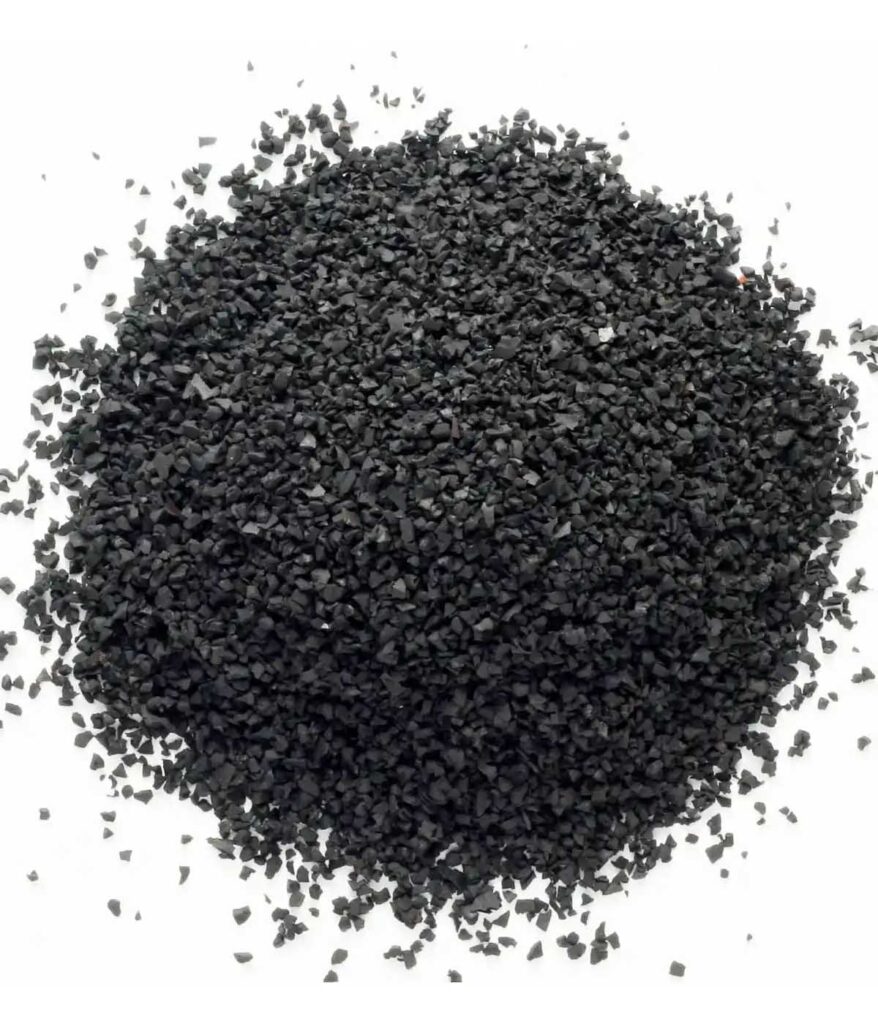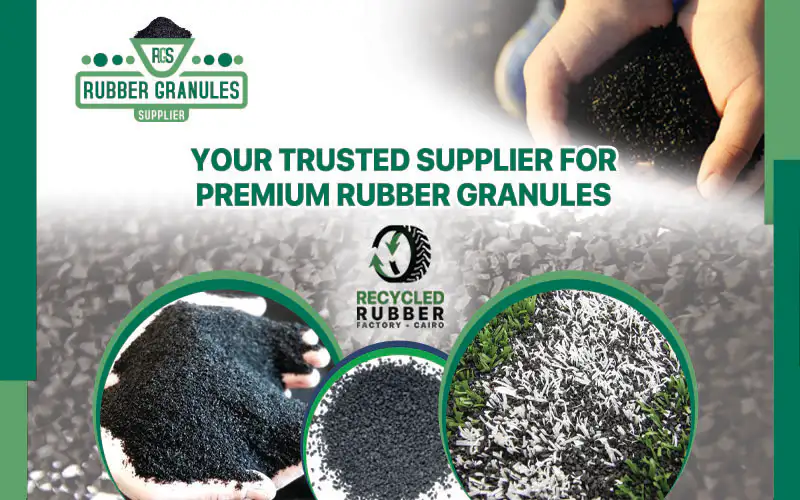
The Comprehensive Guide to SBR Granules Use 2026
The Comprehensive Guide to SBR Granules Use
Introduction
In today’s world, sustainability and innovation are at the forefront of industrial development. SBR Granules Use,
derived from styrene-butadiene rubber, are an essential component in numerous applications, offering durability and versatility.
This article delves into the various uses of SBR granules, highlighting their benefits and significance in different industries.
What are SBR Granules?
SBR granules are small particles made from styrene-butadiene rubber, a synthetic polymer.
Known for their exceptional elasticity and resilience, these granules are widely used in various sectors due to their cost-effectiveness and adaptability.

SBR Granules Use
Key Applications of SBR Granules
1. Sports Fields and Playgrounds
One of the most common uses of SBR granules use is in sports fields and playground surfaces.
These granules provide a safe, cushioned surface that reduces the risk of injuries.
- Shock Absorption: The granules absorb impact, making them ideal for running tracks and artificial turf.
- Weather Resistance: They withstand different weather conditions, ensuring longevity and minimal maintenance.
2. Modified Asphalt and Pavement
SBR granules are crucial in the construction of modified asphalt, enhancing road quality and durability.
- Increased Flexibility: They improve the flexibility of asphalt, preventing cracks and potholes.
- Noise Reduction: Roads constructed with SBR-modified asphalt produce less noise, contributing to quieter urban environments.
3. Automotive Industry
In the automotive sector, SBR granules are used to manufacture various components.
- Durability: They are used in making floor mats and seals due to their resistance to wear and tear.
- Cost-Effectiveness: SBR is a cheaper alternative to natural rubber, reducing production costs.
4. Construction and Building Materials
SBR granules enhance the properties of construction materials, offering solutions for insulation and sealing.
- Thermal and Acoustic Insulation: They provide effective insulation, improving energy efficiency in buildings.
- Waterproofing: Used in sealants, they prevent water leakage and enhance structural integrity.
5. Drainage Systems
In drainage applications, SBR granules facilitate efficient water flow and soil stabilization.
- Permeability: They prevent soil compaction, ensuring proper drainage.
- Erosion Control: Used in landscaping, they help in stabilizing soil and preventing erosion.
Advantages of Using SBR Granules : SBR Granules Use
Environmental Benefits
- Recycling: Many SBR granules are made from recycled tires, reducing landfill waste and promoting sustainability.
- Eco-Friendly: Their use in various applications supports green building practices and reduces environmental impact.
Economic Benefits
- Cost Savings: SBR granules are more affordable than many alternatives, offering significant cost savings in production.
- Longevity: Their durability reduces the need for frequent replacements, lowering maintenance costs.
Performance Benefits
- Versatility: Suitable for diverse applications, from sports fields to industrial products.
- Resilience: They maintain performance under various conditions, providing reliable solutions across industries.
Innovations in SBR Granules
As technology advances, the development of SBR granules continues to evolve, leading to new applications and improved performance.
Enhanced Formulations
- Improved Durability: Innovations in polymer science have led to more durable SBR granules, extending their lifespan in demanding applications.
- Customization: Manufacturers can now tailor the properties of SBR granules to meet specific industry needs, enhancing their functionality.
Sustainable Practices
- Green Manufacturing: The production processes for SBR granules are becoming more sustainable, with a focus on reducing energy consumption and emissions.
- Circular Economy: The use of recycled materials in SBR production supports a circular economy, promoting resource efficiency.
Challenges and Considerations
Despite their many benefits, there are challenges associated with the use of SBR granules that need to be addressed.
Environmental Concerns
- Microplastic Pollution: As with many synthetic materials, there is a risk of microplastic pollution if SBR granules are not managed properly.
- Recycling Limitations: While recycling is beneficial, the process can be complex and requires efficient systems to ensure effectiveness.
Technical Challenges
- Performance Variability: The quality of SBR granules can vary based on the source material and production process, affecting performance.
- Compatibility Issues: In some applications, SBR granules may need to be carefully integrated to ensure compatibility with other materials.
Future Prospects
The future of SBR granules looks promising, with ongoing research and development paving the way for new applications and improved performance.
Emerging Applications
- 3D Printing: SBR granules are being explored for use in 3D printing materials, offering flexibility and resilience.
- Smart Materials: Integration with smart technologies could lead to innovative applications in responsive surfaces and adaptive materials.
Research and Development
- Material Science: Advances in material science are expected to enhance the properties of SBR granules, making them even more versatile.
- Sustainability Initiatives: Continued focus on sustainability will drive innovations in recycling and eco-friendly production methods.
SBR Granules Use
The granules, also known as Styrene Butadiene Rubber granules, have become a popular choice for surfacing materials in various applications.
These granules are created by grinding up recycled tires and then mixing them with binders to form a durable and flexible material.
While they might not sound very exciting, the granules have a wide range of uses and offer many benefits.
SBR Crumb use is in athletic fields and playgrounds. When mixed with a binder, such as polyurethane or acrylic,
these granules create a shock-absorbent surface that is ideal for sports.
The cushioning effect of the Crumb granules helps to reduce injuries and provide a comfortable playing surface for athletes of all ages.
In addition to athletic fields, people use SBR in landscaping and gardening.
They can mix these granules with soil to enhance drainage and aeration.

SBR Granules Use
SBR Granules Use
SBR (Styrene-Butadiene Rubber) granules are a versatile material with numerous applications across various industries.
Here’s a closer look at the different uses of Crumb granules:
1. Construction and Infrastructure:
- Asphalt Mixtures: Crumb granules are commonly added to asphalt to enhance its durability and flexibility. They improve the resistance of the asphalt to cracking and wear, making it ideal for high-traffic roads and surfaces.
- Concrete Additives: When mixed with concrete, SBR granules enhance its elasticity and impact resistance. This makes the concrete more resilient to stress and helps in reducing maintenance costs.
2. Sports and Recreation:
- Playground Surfaces: Crumb granules are used to create soft, shock-absorbing surfaces in playgrounds. This reduces the risk of injuries from falls and provides a safe play environment for children.
- Sports Tracks: In athletic tracks, SBR granules are incorporated to provide a cushioning effect, which improves performance and reduces the impact on athletes’ joints.
3. Industrial Applications:
- Rubber Products: SBR Crumb are used as a raw material in manufacturing various rubber products, including mats, tiles, and seals. The granules enhance the physical properties of the rubber, such as its wear resistance and flexibility.
- Insulation Materials: In industrial settings, Crumb granules are used in insulation materials due to their excellent thermal and acoustic properties.
4. Environmental Solutions:
- Recycling: SBR granules are a byproduct of tire recycling processes. Utilizing these granules helps in managing tire waste and supports sustainable practices by repurposing used rubber.
- Landfill Diversion: By incorporating SBR Crumb into various products, industries can significantly reduce the amount of rubber waste sent to landfills.
5. Consumer Products:
- Flooring Solutions: SBR Crumb are used in flooring products such as rubber tiles and mats. These provide a durable, slip-resistant surface suitable for both residential and commercial spaces.
- Sealants and Adhesives: In sealants and adhesives, Crumb granules enhance bonding strength and flexibility, making them ideal for a variety of applications from construction to automotive repairs.
In summary, SBR Crumb granules offer a wide range of benefits across different sectors. Their use in construction, sports, industry, and environmental solutions showcases their versatility and value in enhancing the performance and sustainability of various products.
What is the difference between SBR and EPDM granules?
People commonly use SBR and EPDM granules for surfacing playgrounds, tracks, and other outdoor areas.
While they may look similar at first glance,
there are some key differences between the two that are important to consider before making a decision on which to use.
Firstly, manufacturers produce these granules from recycled tire rubber,
positioning them as a more environmentally friendly option compared to EPDM granules, which manufacturers produce from synthetic rubber.
This consideration might be important if sustainability is a priority for you.
In terms of durability, EPDM granules outperform SBR.
They are known for their resistance to UV rays and harsh weather conditions, making them less likely to fade.
Another crucial difference lies in cost. SBR is generally more affordable than EPDM,
which can be a significant consideration if you are operating within a tight budget.
Rubber Granules Price
225 $ Per Ton Without Shipping
When it comes to purchasing SBR rubber, price is definitely a factor that many people consider.
The cost of these rubber granules can vary depending on various factors such as the quantity needed.
Typically, the price of Crumb granules can range anywhere from a few cents per pound to several dollars.
The price may also vary depending on the color of the granules.
Conclusion : SBR Granules Use
Crumb granules are a vital component in various industries, offering numerous benefits from cost savings to environmental sustainability.
As technology and sustainability practices continue to evolve, the potential applications and advantages of SBR Crumb are likely to expand,
making them an increasingly valuable resource in the modern world.
For businesses and industries looking to leverage the benefits of Crumb granules, staying informed about the latest developments and innovations is crucial.
By doing so, they can ensure they are using the most effective and sustainable materials available, contributing to a more sustainable future.
If you’re interested in exploring how Crumb granules can benefit your industry,
consider reaching out to experts and suppliers who can provide tailored solutions to meet your specific needs.
When it comes to making environmentally-conscious choices, using SBR granules is a step in the right direction.
These granules, made from recycled rubber, have a wide range of versatile applications that can benefit both individuals and businesses.
From playgrounds to sports fields, from landscaping to road construction,
Crumb granules use offer a sustainable option that combines durability with eco-friendliness.
In this essay, we will explore the various uses of granules and the advantages they bring to different industries.
Visit our Website or Facebook Pages for new rubber products and offers.
For more information or to place an order, please contact us:
Contact Us: Website: www.rubbergranules-supplier.com
E-Mail: [email protected]
WhatsApp: 00201067974786
Facebook: Rubber Granules Supplier
Instagram: rubbergranules.supplier

